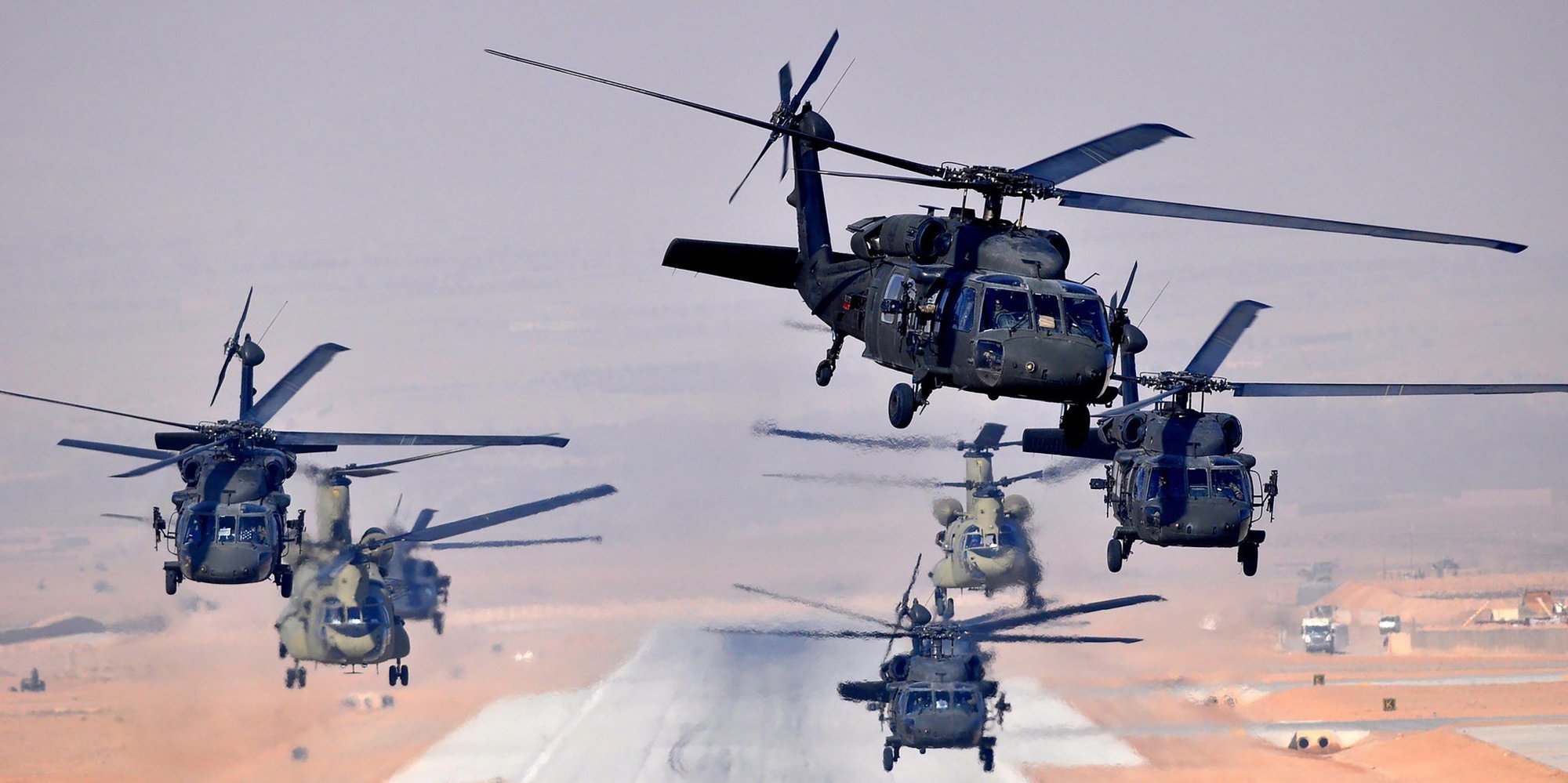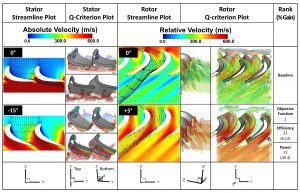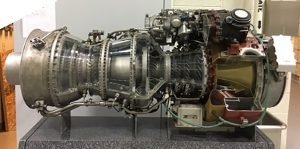
ABERDEEN PROVING GROUND, Md. — A team of U.S. Army and academic researchers developed a novel design to automatically adjust aircraft engine rotor blade positions while already in-flight, a tactic that could improve turbine engine performance.
Researchers from the U.S. Army Combat Capabilities Development Command, now known as DEVCOM, Army Research Laboratory, Iowa State University and Brown University used Army supercomputers to conduct coupled computational fluid dynamics and surrogate model analysis to develop new variable speed concepts, particularly during dynamic movements. This discovery could improve performance of Army helicopters and other machinery using turbine engines such as turboshaft, turbofan or turbojet powered aviation vehicles across the DOD and the civilian sectors, as well as power plant designs.
“Today’s gas turbine engines are optimized to produce peak performance at a single design speed with fixed blade geometries for a specific operating condition,” said Army aerospace engineering researcher Dr. Luis Bravo. “This limitation creates drastic performance losses when operating away from the optimal design point, such as during take-off or landing, or when conducting sudden maneuvering. The variable speed concept improves performance by maintaining blade aerodynamic efficiency within the optimum range at all operating conditions.”

A patent application on the Army’s concept of self-adjusting flow-incidence tolerant blade design is with the U.S. patent office, said Army aerospace researcher Dr. Muthuvel Murugan, who works with this research team.
The research team demonstrated their simulation framework through the modeling, analysis, and optimization of an Army rotorcraft gas-turbine engine, such as the T-700 engine powering Apache and Black Hawk rotorcraft.
“High-fidelity modeling provides superior accuracy in turbine engine design,” Bravo said. “However, this level of precise modeling comes with relatively high computational cost in order to achieve optimal design. To reduce the amount of design iterations needed for this high degree of accuracy, we used a surrogate framework, based on a statistical sampling method and a precise optimizer to select the best performance. This achieved optimal design of the gas turbine at a much lower cost.”

The team studied the aerodynamics in an annular high pressure turbine rig using active flow control methods on the rotor blades that allowed precise adjustments of the throat area. The team also examined typical rotorcraft cruising conditions, specifically by determining the stator- and rotor-blade optimal positions during design and off-design engine operations, at 50%, 75% and 100% of the rotor speed. Using the proposed framework, the researchers gained significant improvements of 6.1% for the turbine efficiency and up to 49% for the shaft output power. These results are critical to extending variable speed engine concepts that provide more power while reducing operating costs for turbine powered vertical lift vehicles.
“Efficient variable speed engine technology can enable advanced rotorcraft using slowed or optimized rotor configurations to achieve increased speed or range capability,” said Kevin Kerner of the DEVCOM Aviation and Missile Center.
The team published its research, Optimizing gas turbine performance using the surrogate management framework and high-fidelity flow modeling, in an Army-led special issue of the peer-reviewed journal Energies, Advancements in Multiphase Fluid Dynamics in Energy & Propulsion Systems.
“The idea of self-adjusting engine came from morphing systems,” said Dr. Anindya Ghoshal of ARL. “ARL is taking these self-adjusting engine concepts to develop a futuristic convertible engine concept that will enable future Army aviation systems to go supersonic or transonic at cruise, while enabling highly efficient hover.”
The research team plans to continue this work by developing an experimental prototype and extending this methodology to multi-stage engines, and investigating the benefits of active flow control in coupled pulsed combustor designs. The research team will continue to disseminate their results to Army aviation communities to inform current platforms and future development and modernization efforts.

Coffee or Die is Black Rifle Coffee Company’s online lifestyle magazine. Launched in June 2018, the magazine covers a variety of topics that generally focus on the people, places, or things that are interesting, entertaining, or informative to America’s coffee drinkers — often going to dangerous or austere locations to report those stories.
BRCC and Bad Moon Print Press team up for an exclusive, limited-edition T-shirt design!
BRCC partners with Team Room Design for an exclusive T-shirt release!
Thirty Seconds Out has partnered with BRCC for an exclusive shirt design invoking the God of Winter.
Lucas O'Hara of Grizzly Forge has teamed up with BRCC for a badass, exclusive Shirt Club T-shirt design featuring his most popular knife and tiomahawk.
Coffee or Die sits down with one of the graphic designers behind Black Rifle Coffee's signature look and vibe.
Biden will award the Medal of Honor to a Vietnam War Army helicopter pilot who risked his life to save a reconnaissance team from almost certain death.
Ever wonder how much Jack Mandaville would f*ck sh*t up if he went back in time? The American Revolution didn't even see him coming.
A nearly 200-year-old West Point time capsule that at first appeared to yield little more than dust contains hidden treasure, the US Military Academy said.












